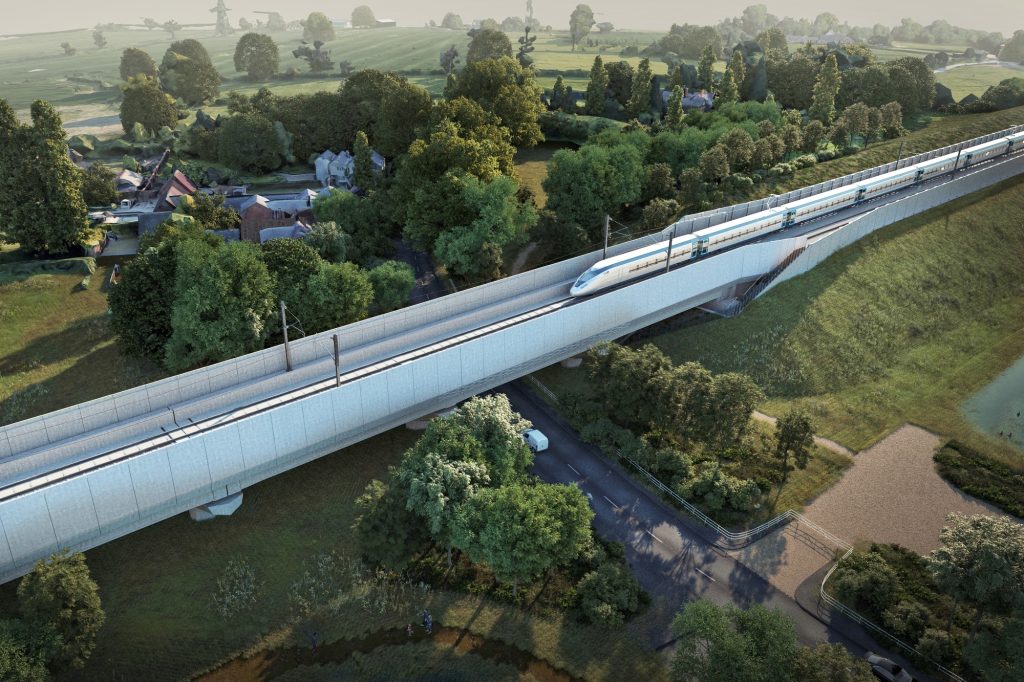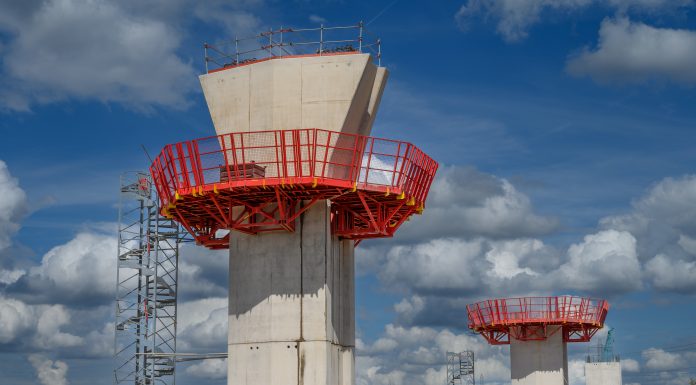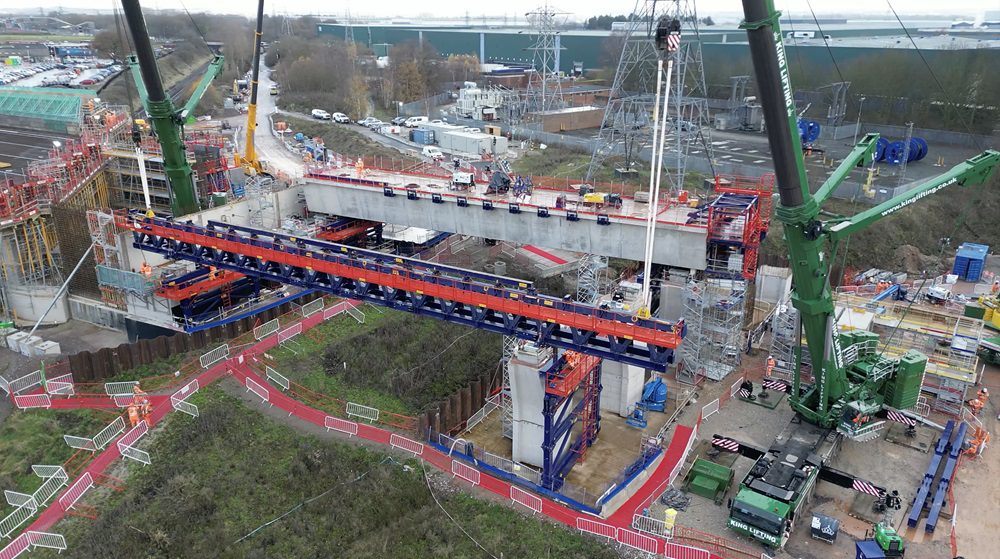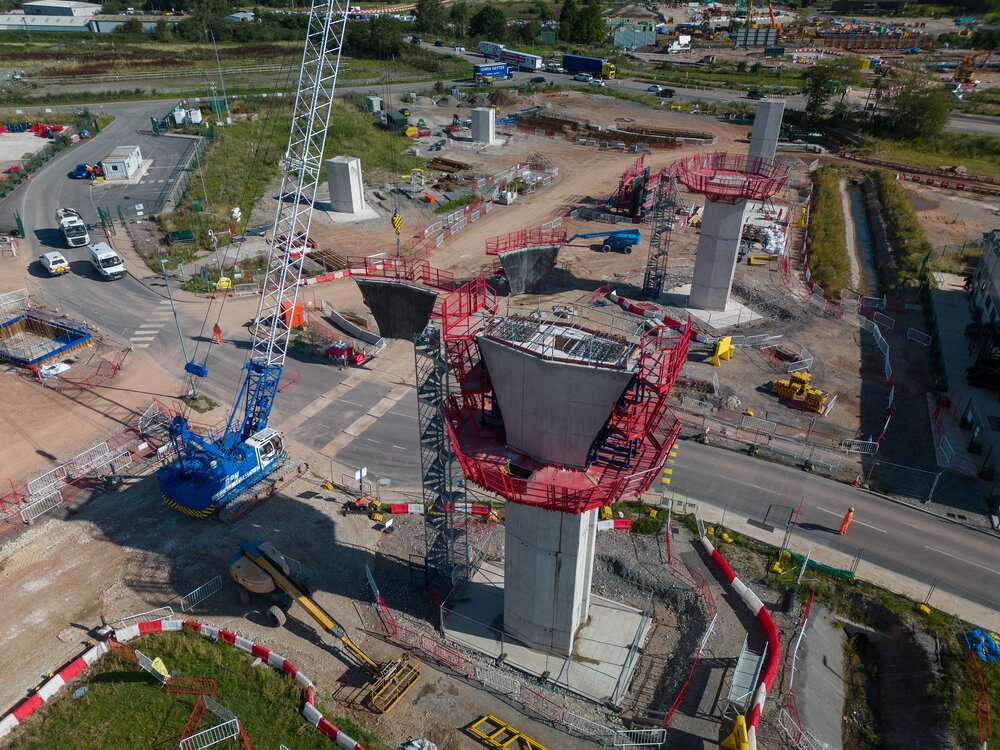First pier in place for HS2’s Water Orton Viaducts

One of the most complex HS2 network structures in the West Midlands has hit a major milestone with the completion of the first of 32 giant piers for the Water Orton Viaduct.
Balfour Beatty VINCI (BBV) is building the 1,400-metre northbound and southbound structures, which will connect HS2’s Birmingham Curzon Street Station with Crewe and Manchester.
They are part of the Delta Junction, which is a triangular section of the high-speed railway made up of nine precast segmental viaducts, embankments, and other bridging structures, with around 10km of track crossing a network of motorways, roads and rivers.
Reaching 20 metres tall at its highest point, the two Water Orton Viaducts will be amongst the tallest structures along the HS2 route, taking trains over key transport corridors including the M42, the Birmingham to Peterborough rail line and the River Tame.
David Waite, BBV’s construction director, said: “Witnessing the removal of the shuttering to reveal the first completed pier for Water Orton Viaduct was an important occasion for the 1,100 people who make up the Delta workforce.
“With the production line at the Kingsbury pre-cast factory now in full swing, we will start to see the viaduct take shape over the coming months, with the first span due to be completed early next year.”
The pier was built in situ with a bespoke formwork designed specifically for the project, and with a fully prefabricated reinforcement cage, assembled in the rebar factory located near Coleshill.
The piers will support the deck, which will be built using an innovative construction method and bespoke machinery.
The deck segments will be produced at HS2’s nearby outdoor purpose-built Kingsbury factory near Lea Marston. The factory is making a total of 2,742 segments for the entire Delta Junction, generating over 6km of post tensioned viaduct. The segments will be transported to site using haul roads to reduce HS2’s impacts on local roads.
To reduce environmental impacts, engineers have incorporated ground granulated blast-furnace slag (GGBS) – a by-product of the steel manufacturing industry – into the structures as an eco-friendly alternative to a traditional concrete mix, reducing carbon use by more than 60%.
Sam Hinkley, HS2’s senior project manager for Delta Junction, said: “This is another key moment for HS2 in the West Midlands as work ramps up on one of the most complex sections of the whole route.
“The Delta Junction is HS2’s key interchange where the new zero-carbon high speed railway will connect between London, the Midlands, and the North.
“Minimising disruption to local communities in this area has been a key consideration in our planning, including the use of innovative pre-cast construction techniques, and haul roads to take lorries off local roads.”
After the piers are constructed, the viaduct spans will be built by raising each segment from a temporary suspension tower erected on top of each pier. When each span is complete, the suspension tower will be disassembled and moved further along the viaduct to build the next span.
An innovative ‘match-casting’ technique means that each viaduct segment is cast against the following segment in a production line, creating a seamless viaduct deck when installed. Each segment is uniquely precise and adjustable by as little as 5mm.
This approach – where each segment is poured against the previous one – ensures the whole arch fits perfectly when assembled on site.
Once built, BBV says the area underneath the viaduct will be landscaped to provide a connected and accessible area with tree planting, new wildlife habitats, footpaths and cycle routes.
Main image: The first completed Water Orton Viaducts Pier
Read next: Mace secures ‘solar membrane’ role at London Stadium
Are you a building professional? Sign up for a FREE MEMBERSHIP to upload news stories, post job vacancies, and connect with colleagues on our secure social feed.





Responses